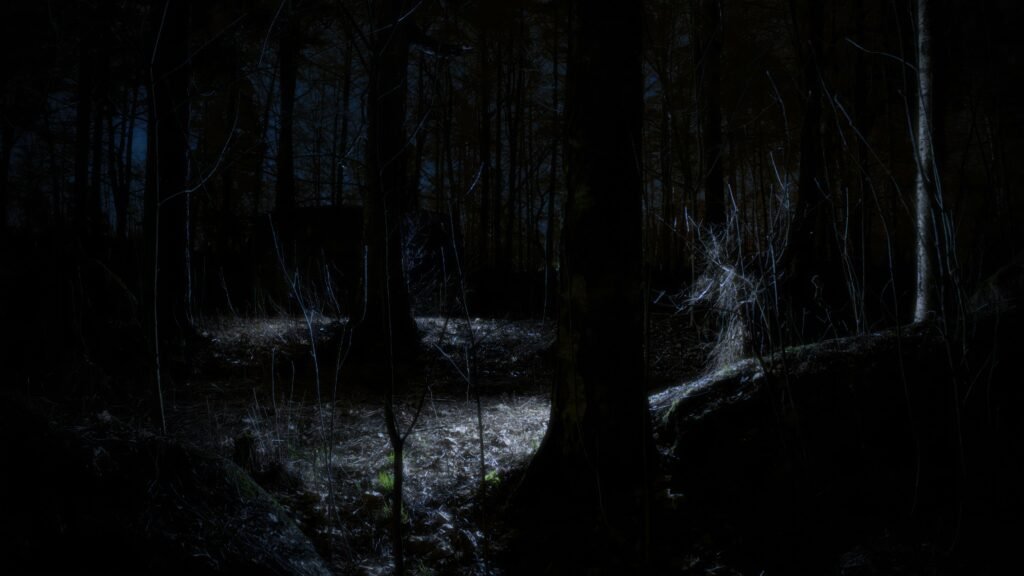
The Secret to Finally Feeling Done With Cleaning—Clean With ADHD Part 3
Do you hate cleaning? Does it feel never-ending? Do you start cleaning a room, get to the point where you should actually be finished, yet even after all that work it still doesn’t feel clean—because everywhere you look, you keep spotting more things you missed? A sauce splatter on the backsplash, a few crumbs on the floor even though you already vacuumed, or maybe it’s just a vague feeling that the room doesn’t quite “feel right,” and you think that must be the reason why it still doesn’t feel clean. And now you think that maybe if you re-organize all the drawers and cabinets that will solve the problem.
Then you end up taking everything out—and eventually running out of steam, surrounded by a mountain of belongings and shame, with no energy left to put anything away. And now the room looks way worse than when you started.
Do you think this is just your ADHD? That the only fix is to try again after your meds kick in—if they’re even working that day? If that’s you, let me be clear: your brain is not broken. You are not lazy. And you are not doomed to suffer through this cycle forever.
What’s actually happening is simple and easy to understand once you know how your brain works. It isn’t perfectionism, and it isn’t a personality flaw. It’s simply that your brain is missing one crucial thing: closure.
If you’ve already tried the Photo Method from Part 2, this is the step that makes it stick and feel good. It’s what tells your brain, “Yes. This is done. This is what clean looks like.”
Keep reading. I’ll show you exactly what I mean—and what to do.
Why People With ADHD Rarely Feel Finished
If every to-do list you’ve ever made feels never-ending—and no matter how many boxes you check off, you never feel satisfied—here’s why:
Your brain doesn’t automatically close tasks.
Think of your brain like a phone. Each task—like “clean the bathroom”—is like an app that you open. But when you switch to something else, that app doesn’t just close on its own. It keeps running in the background, draining memory and battery, even though you’re not using it anymore. The phone doesn’t know you’re done with the app until you manually swipe it away.
That’s the ADHD brain. It keeps tasks open in the background until there’s a very clear, external sign that the task is over—like the school bell ringing, or coworkers packing up at 5 PM.
Neurotypical brains usually get a little dopamine spike when something’s complete. It’s that “ahhh, done” feeling, which is dopamine’s way of saying, “all finished—good job,” and marking the task as a success.
However, ADHD brains don’t always get a dopamine burst right when a task is finished, so that internal “ahh, done” feeling is very muted or comes much later. So even when you finish something big—like deep-cleaning an entire room or completing a work project—it can feel like you’re still right in the middle of it. You don’t get the internal celebration or psychological exhale. Instead, you get a sense that something’s still unfinished, and it bothers you.
This is why cleaning feels endless.
You keep spotting more crumbs, more smudges, more tiny things to fix. Your brain keeps looking for more work to do because it hasn’t ”closed the app,” so you never feel done. You just eventually feel exhausted, get bored, or both—and that feels awful.
And when that happens, your brain doesn’t log it as a win. It logs it as stress—because you left the task feeling unfinished, unsatisfied, or maybe even ashamed. It records that task as something to avoid. Over time, your nervous system learns that cleaning = failure, frustration, exhaustion.
So of course you don’t like cleaning, and of course you want to avoid it.
And it’s not because you’re lazy or undisciplined. It’s because your brain has never been shown how to close the cleaning app, and has learned that cleaning is stressful and something to avoid.
In Part 2, we talked about the Photo Method—teaching your brain to form a clean mental image of what “done” looks like. But for that image to really stick, your brain has to know when to stop updating it. It needs a signal: “This is it. This is the final version.”
And to recognize that final image, your brain first needs to exit the app.
That’s where anchors come in.
Meet the Task Completion Anchor: Your ADHD Brain’s “Stop Button”
A task completion anchor is a short, sensory ritual that tells your brain: We’re finished now. You can stop searching.
It signals that the task is done, triggers a small dopamine reward, and helps your brain lock in the memory of success. It can be anything simple and repeatable—a phrase, a sound, a motion, a taste—but the most powerful type of anchor is scent.
Why scent?
Because olfactory (smell) signals quickly travel to the parts of the brain responsible for memory and emotion, much more quickly than language or logic.
That’s what makes smell so powerful: it forms strong, fast associations. The brain links that scent directly to whatever you were feeling or experiencing when you smelled it. It becomes part of the memory.
That’s why a smell can instantly transport you directly back to a memory happily eating cookies at your grandmother’s house. And that’s exactly the kind of power we want to harness with a task completion anchor.
But instead of nostalgia, we’re tying that deep emotional imprint to the feeling of the clean, calm room you just finished tidying. The goal is for your brain to experience that scent and immediately recognize: This is what “done” feels like.
This Will Change the Way You Feel About Cleaning
Seriously. Anchors aren’t fluff or wishful thinking. They’re basic Pavlovian conditioning: consistent cue → predicted reward → stronger motivation.
When you end your cleaning session with the same scent every time, your brain starts to associate that scent with the satisfaction of a job well done. And not just after the fact—during cleaning, your brain starts to anticipate that good feeling.
Which means your brain actually starts wanting to clean.
Because it knows: If I finish the job, I get the reward. I get to spray the scent. I get to feel that release—“I did it. I’m done.”
This reinforces everything you started in Part 2. The more your brain links a clear, clean image with a feeling of satisfaction, the faster it learns: This is what normal looks like. And this is what I like.
And there’s something else happening here too: that scent isn’t just a reward—it’s a signal to your brain that work mode is over. It helps you manually transition out of the cleaning mindset and into a new mental state. (We’ll talk more about that in an upcoming post.)
Sound Familiar?
You’re not doing anything wrong when you stop cleaning and still feel unsettled. It’s not a personal failure or lack of willpower or discipline. It doesn’t mean you’re lazy.
It’s just your brain stuck in an open loop—still waiting for a signal that it’s okay to stop.
That’s what this anchor is for.
It’s not just a finishing touch—it’s the exit ramp. The mental “off” switch.
It tells your brain: This job is complete. You did enough. You’re done.
Here’s how to use it.
How to Use a Scent Anchor to Feel Done
- Pick a new scent you love.
Choose something brand-new—so it doesn’t already have memories tied to it. A new air freshener spray is perfect. - Only use it when you’re done.
This is key. You’re not using it to freshen the air—you’re using it as a ritual. A signal. A mental “off” switch. - Spray it the moment your cleaning session ends.
As soon as you finish your checklist, spray the air. Then breathe it in. - Say something out loud.
“I’m finished cleaning.”
“I’m done here.”
“Mission complete.”
Pick a phrase and stick with it. Use your voice. It matters more than you think. - Notice the feeling.
That little flicker of pride? That breath of relief? That’s dopamine. That’s your reward loop starting to form.
Bonus: Use It to Interrupt Obsessive Cleaning
If, after you finish your checklist, you feel like you can’t stop—because you spotted another crumb on the floor or a smudge on the microwave—use that moment as a clear sign: you’re stuck in the loop.
Your brain isn’t closing the cleaning app on its own. You need to take over and do it manually.
This is your cue. Spray the scent. Say your closing phrase. End those thoughts and let yourself feel relief.
Over Time, This Ritual Gets Powerful
With repetition, this little anchor becomes something strong—almost like a mental savior.
On the first day, it’ll feel new because you’re just starting the training. But as the days pass and you keep repeating it, the feeling gets stronger. And since the ADHD brain adapts quickly, the anchor builds strength fast—often within a week or two, your brain will begin to associate that scent with the feeling of: you did it.
It rewires your relationship with cleaning from:
- Dread → Completion
- Chaos → Control
- Endless work → One-and-done win
Eventually, your brain will start to crave the spray—not because it marks the end, but because it feels good.
And that craving becomes your new motivation to clean.
No shame. No pressure. No dread.
Just the desire to finish, feel that reward, and grow your pride.
Cleaning With ADHD Can Feel Amazing
You don’t have to live in a loop of starting but never finishing. Of cleaning but never feeling satisfied. Of constantly being pulled to do more just because your brain won’t shut it down.
This anchor is your off switch. Your finish line. Your way out.
And it’s not just about feeling better today. It’s about reshaping how your brain sees cleaning forever.
So try it. Pick your scent. Use it today. And drop me a comment: did you feel done?
(Then get ready for the next post—where I’ll show you how to set up your room to maximize prediction errors and make cleaning easy.)
TL;DR – How to Make Your Brain Feel Done
- People with ADHD often stop cleaning because they’re tired or bored, not because they feel finished.
- That “unfinished” feeling is because your brain didn’t get a clear signal that the task is over.
- Without closure, your brain keeps the task open—like an app running in the background.
- A task completion anchor is a short, sensory ritual that manually closes the loop.
- The best anchor is scent because it links powerfully to memory and emotion.
- Spray the same scent every time you finish cleaning, and say a phrase like “I’m done.”
- Over time, this creates a reward loop—your brain starts to crave the feeling of completion.
- You stop associating cleaning with stress and start associating it with satisfaction and pride.
- You don’t have to force yourself to finish anymore. You’ll want to finish—so you can feel done.
What’s Next?
Coming up:



